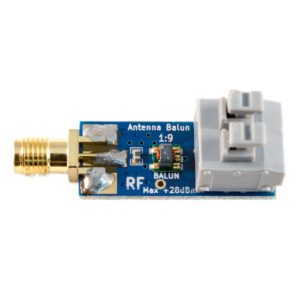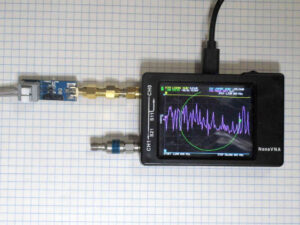I often need to calculate loss from marker values on a VNA screen, or extracted from a saved .s2p file.
Firstly, loss means PowerIn/PowerOut, and can be expressed in dB as 10log(PowerIn/PowerOut). For a passive network, loss is always greater than unity or +ve in dB.
\(loss=\frac{PowerIn}{PowerOut}\\\)Some might also refer to this as Transmission Loss to avoid doubt, but it is the fundamental meaning of loss which might be further qualified.
So, lets find the two quantities in the right hand side using ‘powerwaves’ as used in S parameter measurement.
s11 and s21 are complex quantities, both relative to port 1 forward power, so we can use them to calculate relative PowerIn and relative PowerOut, and from that PowerIn/PowerOut.
PowerIn
PowerIn is port 1 forward power less the reflected power at port 1, \(PowerIn=P_{fwd} \cdot (1-|s11|^2)\).
PowerOut
PowerOut is port 2 forward power times less the reflected power at the load (which we take to be zero as under this test it is a good 50Ω termination), \(PowerOut=P_{fwd} \cdot |s21|^2 \).
Loss
So, we can calculate \(loss=\frac{PowerIn}{PowerOut}=\frac{\frac{PowerIn}{P_{fwd}}}{ \frac{PowerOut}{P_{fwd}}}=\frac{1-|s11|^2}{|s21|^2}\)
Noelec makes a small transformer, the Balun One Nine, pictured above and they offer a set of |s11| and |s12| curves in a back to back test. (Note: back to back tests are not a very reliable test.) Continue reading Calculate Loss from s11 and s21 – convenient online calculator

